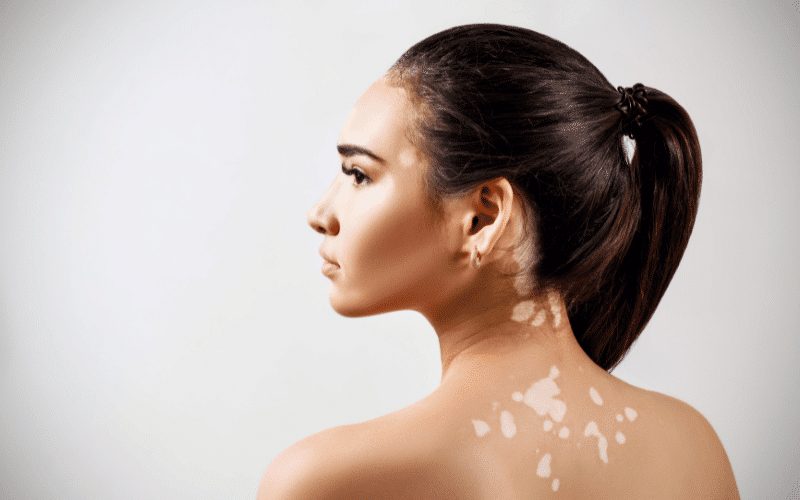Disease 14. Vitiligo: A Tale of Disappearing Pigment

Vitiligo is a skin condition characterized by the loss of melanocytes, the pigment-producing cells in the skin, resulting in the appearance of white patches. These patches can develop anywhere on the body, but they are commonly found on sun-exposed areas, such as the face, hands, and feet. Vitiligo affects people of all skin types but is more noticeable on individuals with darker skin tones.
The exact cause of vitiligo is still unknown, but it is believed to involve a combination of genetic, autoimmune, and environmental factors. Stress, physical trauma, or exposure to certain chemicals may also contribute to the development of vitiligo.
Diagnosis of vitiligo is typically made through a physical examination and a medical history assessment. In some cases, a skin biopsy or blood tests may be performed to rule out other conditions or confirm the diagnosis.
There is no cure for vitiligo, but several treatments can help manage symptoms and improve the appearance of the skin. Topical corticosteroids, calcineurin inhibitors, and vitamin D analogs can be used to help restore pigmentation in the affected areas. Light therapy, including narrowband ultraviolet B (NB-UVB) or psoralen plus ultraviolet A (PUVA) therapy, can also be effective in promoting repigmentation. In some cases, tattooing or skin grafts may be considered as treatment options.
Lifestyle adjustments, such as using sunscreen, wearing protective clothing, and embracing a healthy skincare routine, can help manage vitiligo and reduce the risk of complications, such as sunburn or skin cancer. Additionally, psychological support and counseling can be beneficial in coping with the emotional impact of living with vitiligo. (14)